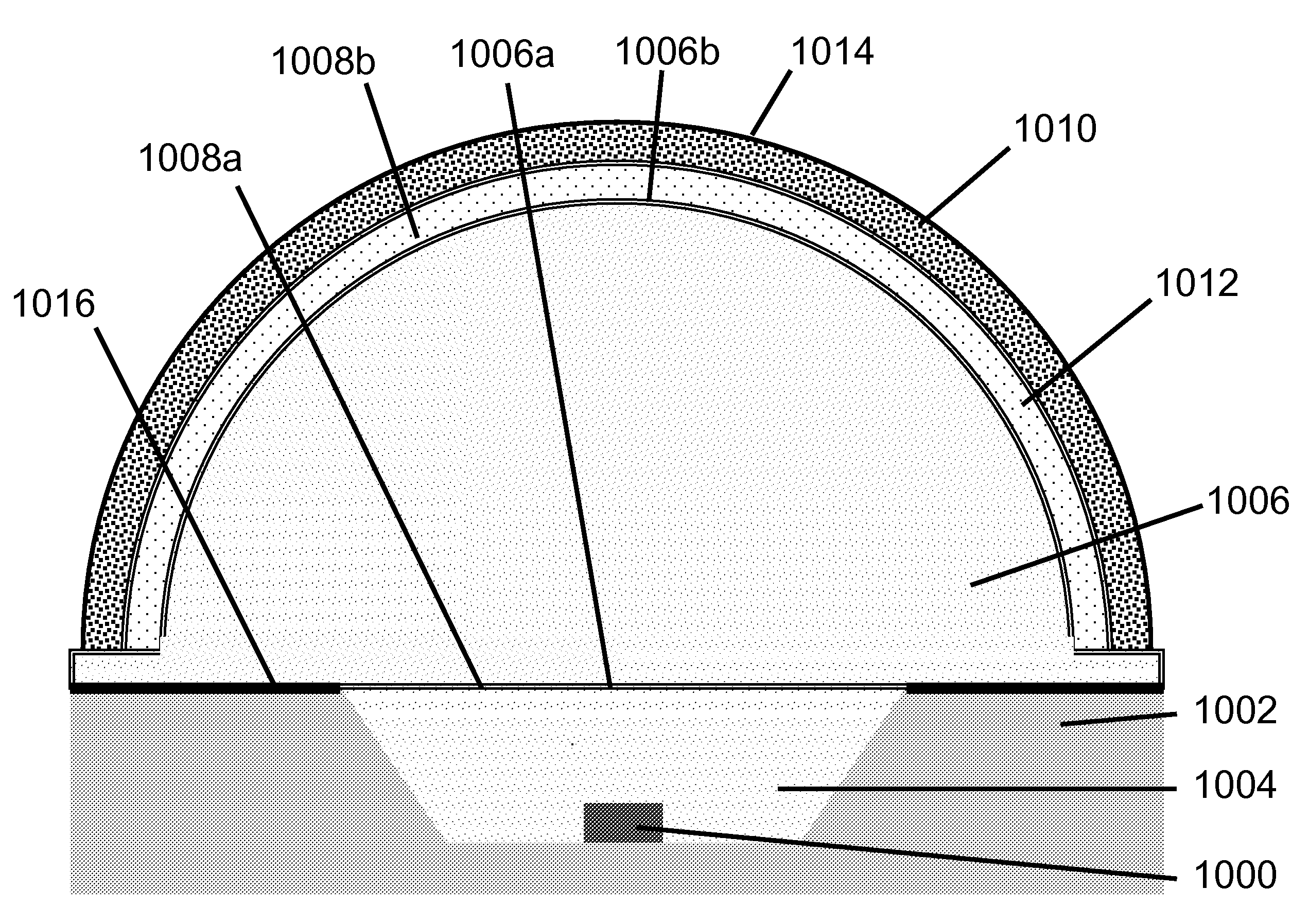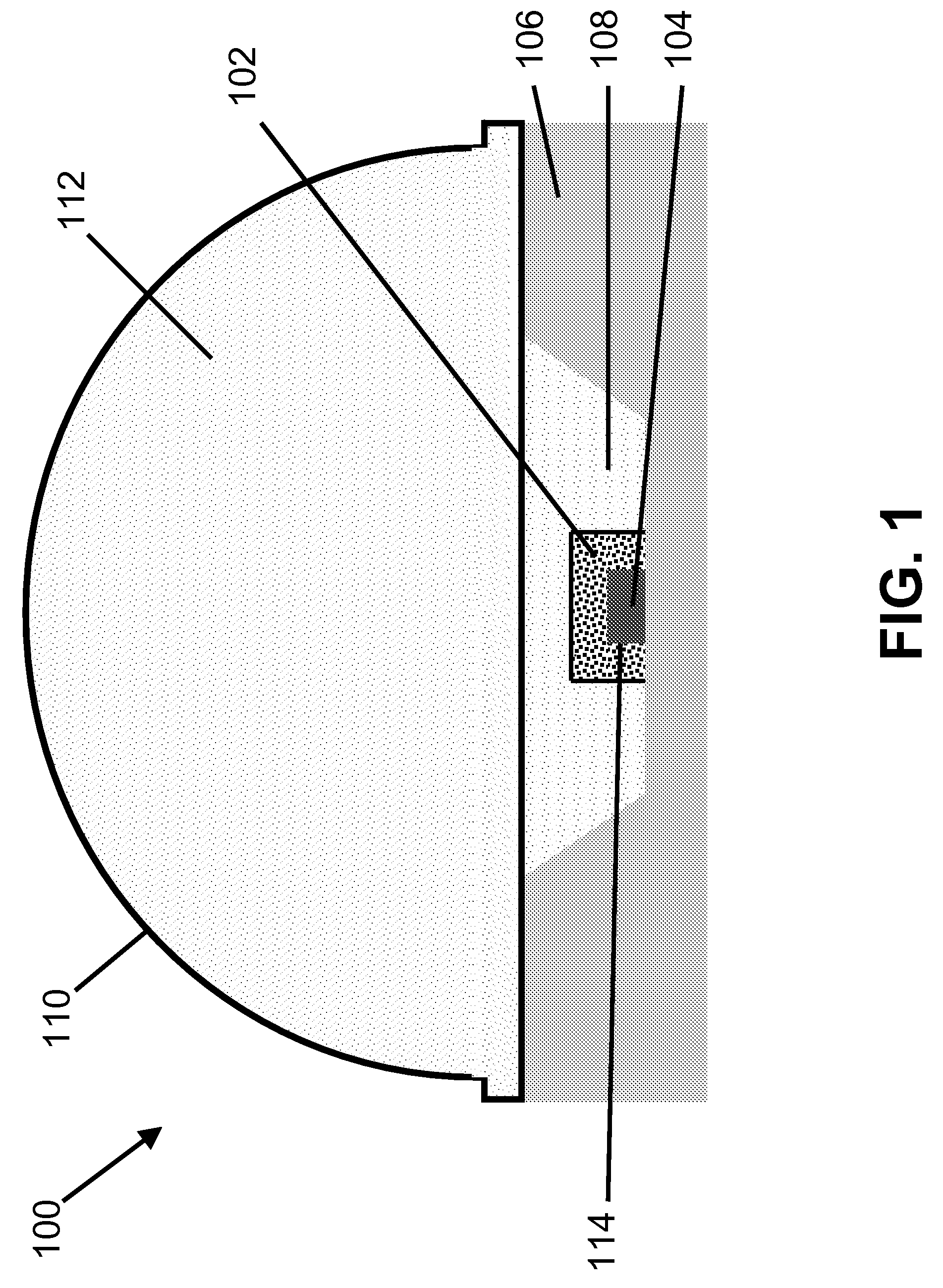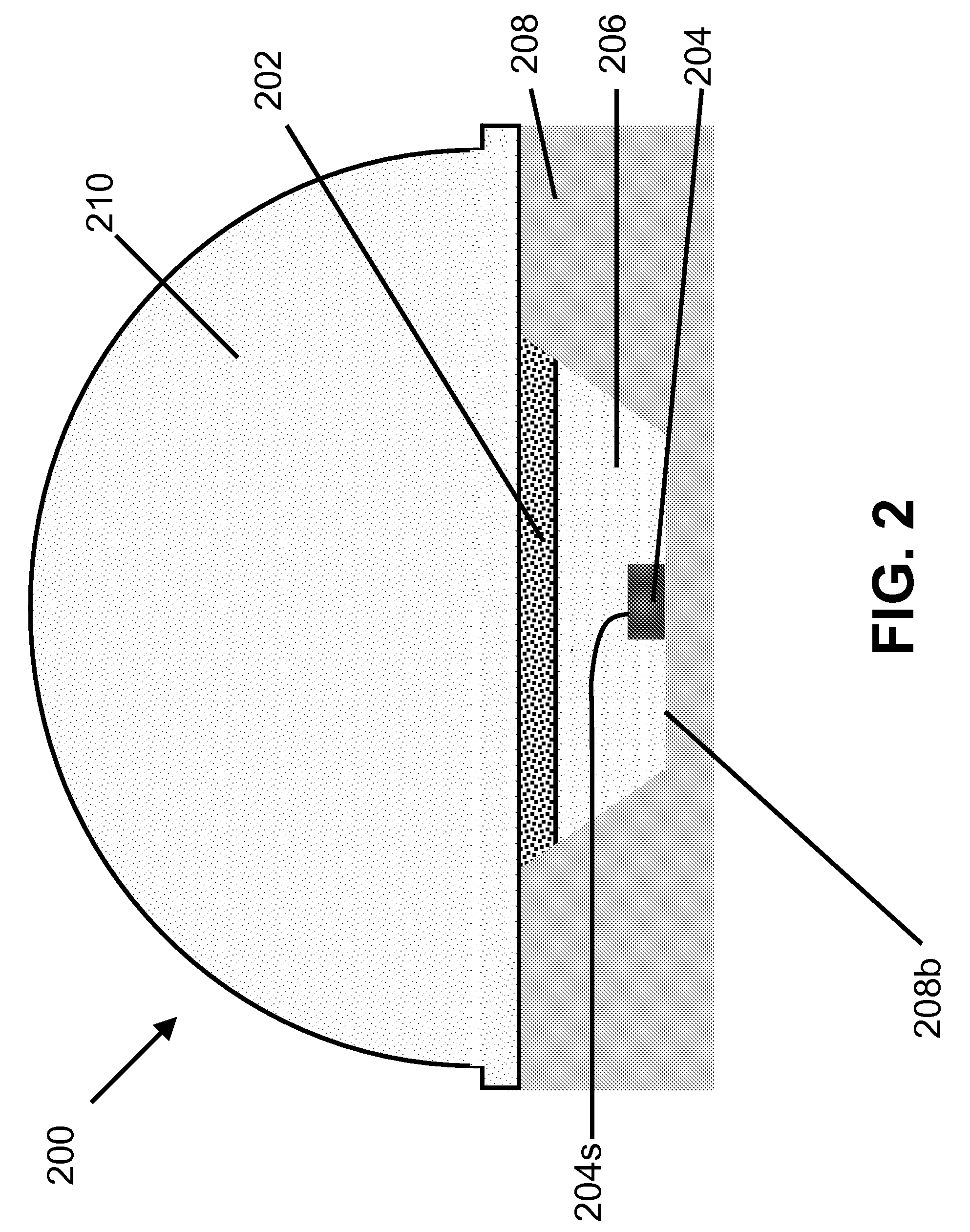Optical designs for high-efficacy white-light emitting diodes
- Summary
- Abstract
- Description
- Claims
- Application Information
AI Technical Summary
Benefits of technology
Problems solved by technology
Method used
Image
Examples
examples
(1) Using a Commercially Available Blue LED Chip
[0076]FIG. 19 shows a schematic of a device 1900. A blue LED lamp was formed by attaching a commercially-available CREE EZR450 LED die or chip 1902 onto a silver header 1904 by using silver epoxy. Silver epoxy allows for vertical electrical conduction throughout the LED die 1902; more specifically, it allows the injection of holes traveling from the silicon submount to the p-doped GaN layers and active layers including InGaN quantum wells. The top contact (n-contact) of this die 1902 was connected by a gold wire 1906 to the first (header) post 1908 of the silver header 1904 via wire-bonding. The other (second) post 1910 of the silver header 1904 was connected by another gold wire 1912 to the header 1904 itself via wire-bonding. At this stage, the total radiant flux ΦB of the bare LED die 1902 on silver header 1904 was measured using a calibrated integrating sphere to be 21.0 mW at 20 mA and 3.20 V (DC measurement). The wavelength of li...
PUM
 Login to View More
Login to View More Abstract
Description
Claims
Application Information
 Login to View More
Login to View More - R&D
- Intellectual Property
- Life Sciences
- Materials
- Tech Scout
- Unparalleled Data Quality
- Higher Quality Content
- 60% Fewer Hallucinations
Browse by: Latest US Patents, China's latest patents, Technical Efficacy Thesaurus, Application Domain, Technology Topic, Popular Technical Reports.
© 2025 PatSnap. All rights reserved.Legal|Privacy policy|Modern Slavery Act Transparency Statement|Sitemap|About US| Contact US: help@patsnap.com



